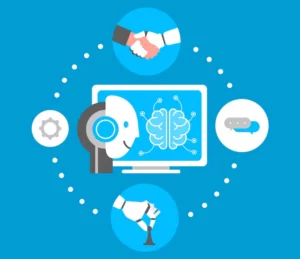Business growth and continuity require innovation and creative problem-solving. For C-level executives tasked with steering organizations through uncertainty and change, maximizing the benefits of artificial intelligence (AI) is no longer a choice but a strategic imperative.
AI has the potential to revolutionize the way people generate ideas, uncover insights, and make informed decisions. This technology is far from replacing human intelligence, but there are specialized tasks for brainstorming that machines can handle without difficulty, such as content curation and data visualization.
In this article, the focus is on how AI can be a game-changer in the brainstorming process, offering valuable opportunities for C-level executives to drive innovation and growth.
AI in Decision-Making and Managing Assets
AI can sift through vast amounts of data, trends, and market information to generate fresh ideas and solutions to complex challenges. You can leverage this technology to provide input criteria or prompts, and AI algorithms can respond with innovative suggestions that might not have surfaced through traditional brainstorming sessions alone.
AI-driven idea generation can accelerate the process of ideation, enabling organizations to stay ahead of the curve and seize emerging opportunities.
AI does not stop at providing ideas as it can also assist in decision-making. AI-driven simulations can test various scenarios and predict outcomes based on different approaches. By analyzing historical data, it can offer valuable insights into the feasibility and potential risks associated with specific concepts. C-level executives can use predictive analytics to prioritize and invest resources in the most promising ideas, optimizing their innovation efforts.
C-suite executives are also starting to leverage AI to improve how they manage business assets. The technology helps in brainstorming for both sides of asset management, from trimming down teams to creating new businesses from the ground up. AI can expedite time-consuming processes to aid the efforts of the leadership team. A data visualization tool can collate historical performance data for analyzing team outputs. A business name generator can assist in establishing subsidiaries by cutting down the time it takes to shortlist possible company names. An investment analytics platform can help in identifying where to best allocate the organization’s monetary assets. With such laborious tasks covered, the top management can focus their brainstorming efforts on forming business strategies and finding new opportunities.
AI in Skill Gap Analysis and Personalized Learning
AI can assess the skills and competencies of employees and identify skill gaps within the organization. This information can guide the leadership team in developing training programs that address the current needs of the business.
The technology is used to assess the learning preferences of individual employees to create personalized learning paths. AI is already used extensively in education and C-teams may learn from existing applications when brainstorming ideas on how to further develop the capabilities of their staff. This ensures that each employee receives training that is tailored to their needs, accelerating their development.
Market Insights and Recommendations
AI-powered analytics can identify trends, patterns, and consumer behaviors that can help in building market forecasts. By integrating these insights into brainstorming sessions, C-level executives can align their strategies with market demands. Additionally, this ensures that their organizations remain agile and responsive to changing customer needs.
By analyzing past transactions and preferences of end-users, AI can offer personalized suggestions and recommendations that your marketers can use. Implementing these strategies can improve the chances of engagement and repeat purchases. Machine learning capabilities can boost the Marketing team’s efforts when brainstorming for the next campaigns. Support provided by AI can unlock the creativity of your team members and drive more meaningful and diverse discussions.
Conclusion
AI is a strategic enabler that has the potential to transform the way organizations brainstorm, innovate, and compete. It can unlock untapped creativity, facilitate informed decision-making, provide data-driven insights, and enhance collaboration.
By harnessing its advantages, organizations can navigate complex challenges, and seize emerging opportunities. This shapes a brighter future in an ever-evolving business landscape. Embrace AI in your brainstorming endeavors, and watch your organization thrive in the era of innovation.


